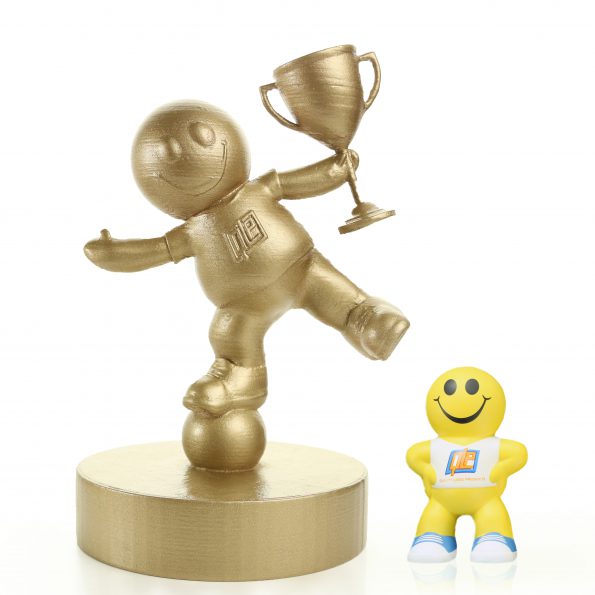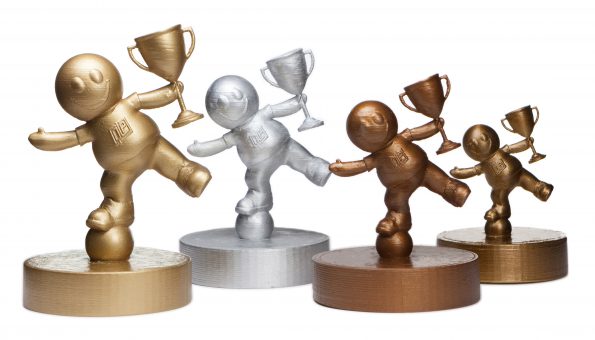Fast Forward - April 2017
WATER COOLER
Waiting Is The Hardest Part
Tired of waiting for the phone to ring (or that email to pop up in your inbox)? Don’t sweat it, says marketing expert Elliott Bell. You can, and should, follow up. As many times as it takes, in fact. The trick is knowing the right way to follow up on any conversation—be it an interview or sales pitch—to help you get your answer and get on with your life. Check out these five tips for fuss-free follow-up.
Stay Civil
Even when it’s not personal, being made to wait on an answer feels personal. Rather than letting those feelings come out in your follow-up message, keep a friendly tone and use language that plainly shows you understand how busy your contact is, and you appreciate them giving their time to you.
Be Persistent, Not A Pest
Avoid the urge to check that pot of boiling water constantly. Waiting one week between contacts is a good rule of thumb where tighter deadlines aren’t in play. After a couple emails are sent weekly, switch to one every two weeks until you get a response or a decision notice.
Cease Fire On Command
If those polite, well-timed follow-up messages aren’t being reciprocated, take the direct approach. It’s okay to ask outright if you should stop contacting the other party. This way neither of you is experiencing wasted time and long stretches of awkward silence.
Try A Little Creativity
Whether your follow-up email contains a little useless trivia or some appreciated insights, adding something unique to the standard follow-up message can get you noticed.
Mix Things Up
Are you in the habit of leaving messages at the same time, on the same day? So are millions of others. It’s good to be consistent, but automating those messages makes you seem like you’re just hedging your bets. Try sending an email at 3:30 on a Friday afternoon, or at 7:45 on a Tuesday morning. You never know when you’ll catch someone with a moment to spare.
FIVE MINUTES WITH
 Jennifer Wolanik, Marketing Expert at Quality Logo Products
Jennifer Wolanik, Marketing Expert at Quality Logo Products
A New Dimension
Looking for a way to kick its supplier awards up a notch, distributor Quality Logo Products in Chicago, Illinois, broke the mold with custom 3D-printed trophies. Jennifer Wolanik, QLP’s resident marketing expert, explains the process of bringing the company’s mascot to life as an award trophy.
PPB What prompted the idea to produce your company’s supplier awards as 3D-printed statues?
Wolanik Our company culture is one of always pushing internal projects to the next level in terms of creativity, method and uniqueness. Our president, Bret Bonnet, and I had discussed the initial possibility of 3D printing with our trophies as the next step in the evolution of our annual Supplier Awards trophies.
We started with our in-house design team, producing several sketches based on a group brainstorm. This option allowed for our sketches to be almost limitless with our creative team unleashing all possibilities for a new trophy design—not that we’ve ever made anything “standard” in the past.
PPB How many did you commission, and what was the time frame for production, from illustration to delivery?
Wolanik We commissioned a local printer to produce a total of 10 trophies, first through 10th place versions. The sizes ranged from six inches tall to more than 10 inches tall, which did restrict us a bit in finding a printer that could accommodate the largest size.
The time frame for having the final products delivered was about two weeks, from the initial sketch to receiving the 3D-rendered files to the final pick-up from the printer. The trophies were printed with white PLA (polylactic acid) plastic, which we then painted in-house in the final colors for each trophy placement.

The trophies for the Supplier Awards ranged from six inches to more than 10 inches tall.
PPB What has been your company’s experience with 3D-printed promotional items, if any? How did you come to connect with your local printer?
Wolanik Prior to this experience, we had never commissioned or had direct experience with 3D-printed items. We do have some resident hobbyists who have experimented with this technology on different scales, but never to this level or size.
We connected to a local printer through 3DHubs.com, a website that helps connect over one billion people worldwide with 3D printer technology. This allowed us a personal experience and the opportunity to ask questions versus ordering through a standard, detached website.

Quality Logo Products commissioned trophies to represent first through 10th place for its annual Supplier Awards.
PPB What did you learn about the process that you found fascinating and/or surprising?
Wolanik The most intriguing part, to us, was seeing our 2D design transform into a molded 3D shape in preparation for the printing. The printer did notify us after receiving the files that some of the elements extended past a 30-degree angle and would therefore need some support scaffolding, which would be removed after the print was finished.
The scaffolding is extra meshed structure extending from the base to the bottom of these angled parts. As the plastic cools down, the support scaffolding helps to hold the printed shape and stop any sag that may occur with larger shapes. It was such an unfamiliar process to us at the beginning but we honestly felt like pros learning about the lingo and process along the way.
PPB Do you have plans to offer 3D merchandise to clients in the future, or have you already begun offering any items?
Wolanik Though we do not currently offer 3D-branded merchandise to our customers, it’s not entirely off the table. This was such an interesting process to go through from beginning to end that it opened up a new category as a possible future offering. It’s an intricate process with hundreds of options, so we would need to be able to optimize for a streamlined process in our e-commerce world before it is officially folded in as an option on our website.
PPB How can distributors incorporate or suggest 3D-printed promotional items for campaigns?
Wolanik If you have a client that is looking for promotional items that are customized on an individual level, then 3D printing is a viable option. With the vendors and designers readily available, anything is possible. The application of 3D-printed items really falls into the opportunity to personalize on a micro scale. It gives the space to think past creating a custom mold for a stress reliever. It’s the ability to offer an intricate, personalized item on an individual scale, plus print in a wide variety of materials.
AD-ITIVES
Advertising In Disguise
Native video follows in the footsteps of advertorials and product placement to reach online consumers in a subtler way.
If you ask the folks who created the classic print advertorial Guinness Guide to Oysters, they might tell you that the best form of advertising never looks like advertising. Rather than an in-your-face proclamation, native advertising seeks to blend in with its surroundings. Online campaigns often pop up in one of two forms: sponsored content and native video. It’s the latter that is seeing the most potential for long-term success.
The numbers support the strategy: $4 billion is spent on mobile video ads in the U.S., including native ads. For inspiration, look to Red Bull. This energy drink giant is considered a pioneer in modern native advertising, and its Chain Reaction video ad is a prime example.
Native video, like other forms of native advertising, is focused on providing relevant information to a specific audience that accesses a particular channel. Native video may play halfway through an article on a website, pop up in a Facebook news feed, or it may bookend streaming video content. What makes the video content native, and therefore subtle, is that the content fits the mold of the channel through which it is being delivered.
What’s more, the content of native video isn’t focused on overtly promoting a product or service, but rather showing how that product or service has been integrated into everyday situations. And when the consumer can more easily imagine living and interacting with a brand, they are more likely to engage.
MARKET SHARE
Rise To The Challenge
Take note of these marketing challenges and how you can overcome them.
We’re already four months into 2017, but it’s not too late to bolster your marketing efforts for the year. Take stock of these four challenges and how you and your team can tackle them.
Diversify skill sets. Marketing decision makers can’t afford to focus on a single silo—they, and their teams, must be able to craft sustainable strategies for digital and social media outreach, and business growth.
Put customers first. A growing preference to be courted by a brand, rather than be bombarded with “best-in-class” rhetoric, is a hallmark of consumer behavior in 2017, according to PR and communications executive Manita Dosanjh. Leveraging social media to nurture customer relationships helps marketers mine data to help refine their strategies and create a substantial cache of ideas for maintaining contact throughout the customer journey.
Learn to balance analytics with creativity. While obtaining and analyzing customer data is crucial to fine-tuning marketing efforts, Rich Honiball says the creative aspect of marketing shouldn’t take a backseat. The award-winning chief marketing officer of Navy Exchange says teams must keep the vein of creativity open to feed delivery channel selection as well as the crafting of the messages themselves.
Think mobile. Mobile experiences are the first stop on the road to B2C connection. Marketing strategies that aren’t built on a mobile-first foundation are destined to lose out on a large share of their target market.

